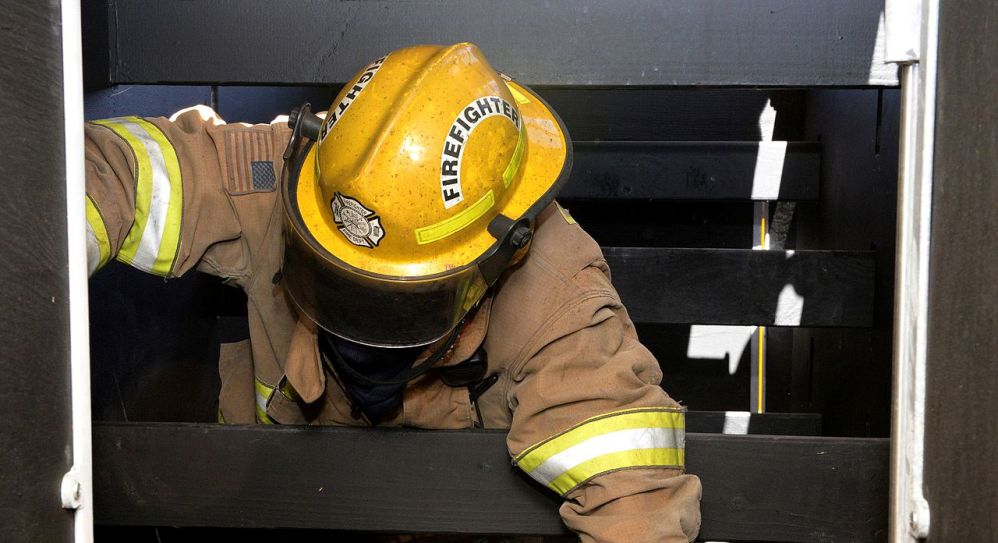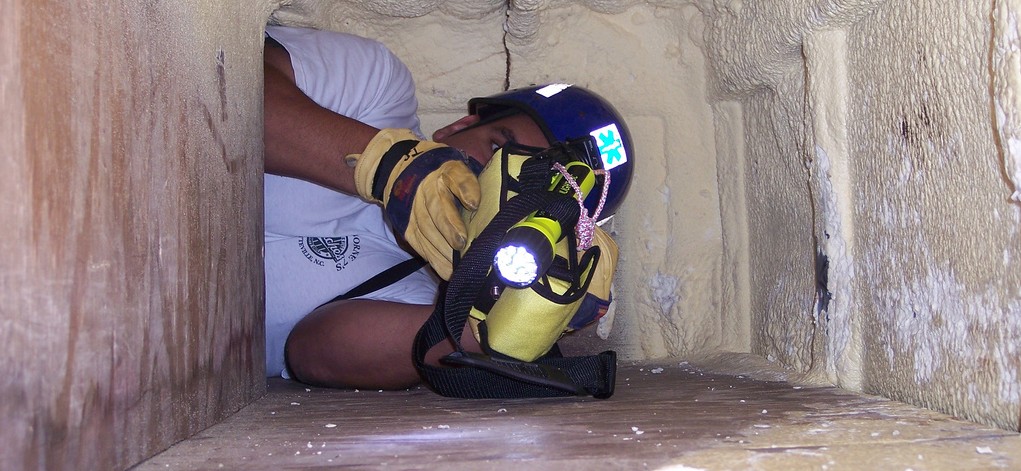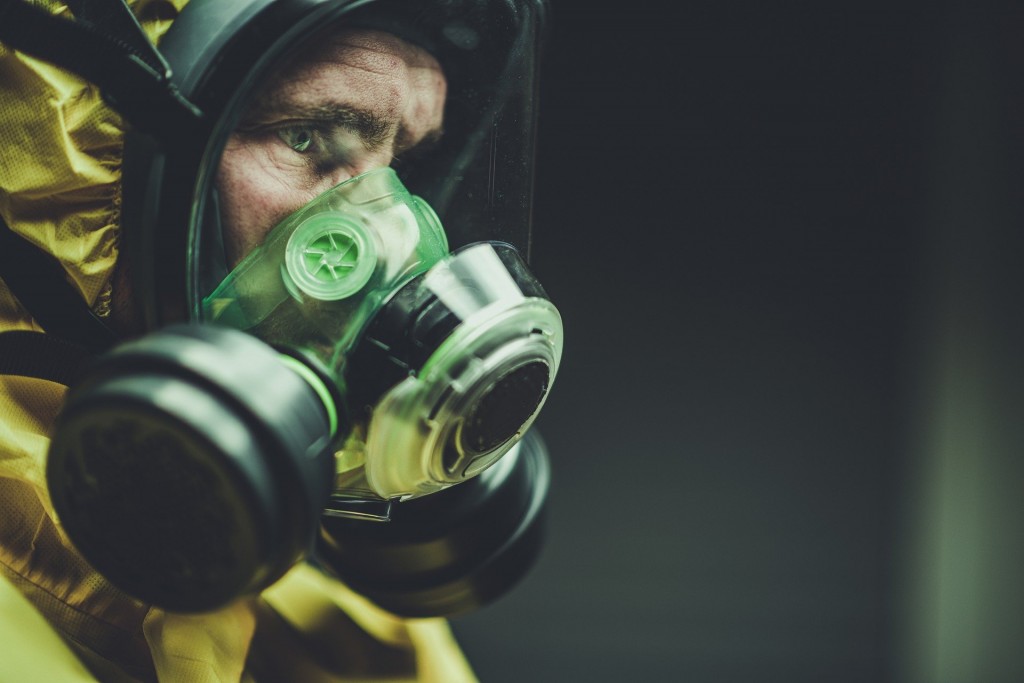Confined spaces pose significant risks to workers due to their enclosed nature and potential for hazardous atmospheres. To mitigate these risks and ensure worker safety, a comprehensive confined space rescue plan is essential.
Jump ahead to the next section by clicking on the corresponding link:
- Why You Need A Confined Space Rescue Plan
- Ministry of Labour, Immigration, Training and Skills Development Requirements for a Confined Space Rescue Plan
- Confined Space Rescue Plan Equipment Requirements
- Written Confined Space Rescue Plan – What Should It Include?
- Responsibilities of the Attendants & Entrants
- Where to Get Confined Space Rescue Training
ACUTE has over 100 years of combined experience with in-house or on-site worker environmental and safety training. Contact us today to learn more

Keep your workers safe by implementing a confined space rescue plan.
1. Why You Need a Confined Space Rescue Plan
A confined space rescue plan, also known as a hazard assessment and control program, is an emergency plan that will ensure that your workers, who need to enter a confined space to perform their duties, are safe.
According to the Ontario Ministry of Labour, Immigration, Training and Skills Development, it is the responsibility of an employer to make sure that none of your workers enter or remain in a confined space unless “adequate written on-site rescue procedures that apply to the confined space have been developed and are ready for immediate implementation.”
2. Ministry of Labour, Immigration, Training and Skills Development Requirements for a Confined Space Rescue Plan
Before you allow any of your workers to enter a confined space, you need to make sure that there are a sufficient number of trained personnel in the following, on site:
- Who knows about on-site confined space rescue procedures
- Who can give first-aid and cardio-pulmonary resuscitation
- Who can use the rescue equipment that is necessary to carry out your confined space rescue plan
These attendants need to be available for immediate implementation of the on-site rescue plan and procedures before anyone enters a confined space. Simply calling 911 is not a form of on-site rescue procedure as it takes time for 911 responders to arrive and you need to have responders ready for immediate implementation to rescue a worker in trouble.
Some of your trained personnel will need to know CPR.
3. Confined Space Rescue Plan Equipment Requirements
The type of rescue equipment that you use will depend on the particular hazards of your confined space and your confined space rescue plan. These could include but are not limited to:
- Harnesses and Lifelines
- Hoist//Retrieval Systems
- Self-Contained Breathing Apparatus
- Airline Respirators
- Personal Protective Equipment
As an employer, you need to make sure that all of the rescue equipment outlined in your confined space rescue plan is:
- Close by and ready to use in case a rescue is needed
- The right type of equipment for entry into a confined space
- Inspected on a regular basis to make sure that it is in good working condition. This inspection needs to be carried out by an individual appointed by the employer and who has enough knowledge, training, and experience to carry it out properly. The inspection needs to be recorded into the entry permit.
In addition to making sure that your rescue equipment is correct, you also need to devise a method of communication between the workers entering the confined space and the attendant assigned to their entry. Options for communication methods include:
- Phone
- Audible Signal
- Radio
- Intercom
- Visual Hand Signal
- Rope Signal

Your confined space rescue plan should outline all necessary equipment.
4. Written Confined Space Rescue Plan – What Should It Include?
Before any of your workers enter a confined space, your entry supervisor will need to fill in the confined space rescue plan or entry permit and review all the emergency procedures written in it with all of the entrants and other related workers. You should establish an entry permit system for each entry into a confined space.
Your plan should include information about the following:
- The date and time of entry and the length of time the permit is valid for
- Confined space name and location
- Possible hazards that may be encountered
- Names of the attendant and on-site rescue personnel
- Methods of communication for the attendant, workers and rescue personnel
- Methods of rescue
- Rescue equipment requirements
- Rescue equipment inspections
- Medical equipment requirements
- Personal protective equipment requirements
- Description and diagram of the confined space
Click here to take a look at a sample confined space rescue plan by the University of Guelph. Your entry permit should be posted in the confined space and stay posted there until the work is finished.

Your confined space rescue plan should also include any necessary PPE.
5. Responsibilities of the Attendants & Entrants
Your confined space rescue plan should outline the responsibilities of both the attendants and entrants. Here are some examples of things that could be included in your plan.
Attendant: The attendant who is waiting near the entrance to the confined space will need to:
Stay in constant communication with all of the entrants and be notified immediately if any of the entrants notices:
- An unusual action or behaviour
- An unexpected hazard
- An unsafe act
- A condition prohibited by the entry permit
Attendants should never enter the confined space, instead, they need to summon the on-site rescue team to perform a rescue using the proper form of communication outlined in the rescue plan.
Entrants: You must exit the confined space as soon and as quickly as possible if:
- Your attendant or entry supervisor orders you to evacuate
- You notice a sign or symptom of over-exposure
- An unacceptable condition occurs
- You hear an evacuation alarm

You should quickly exit if your attendant or entry supervisor orders you to evacuate.
6. Where to Get Confined Space Rescue Training
ACUTE Services can provide you with the proper confined space training that you and your workers need to stay safe. Any workers who enter into a confined space need to have the proper confined spaces training. This type of training will give entrants, attendants and competent persons the skills and training required to recognize confined space entry risks and how to establish measured and corresponding controls.
Participants will have the opportunity to become familiar with, inspect and use Confined Space Entry (CSE) access equipment and air quality instrumentation.
Training program topics include:
- Confined space entry accidents
- Regulation 632/05 – Confined Spaces overview
- Statutory and regulatory responsibilities
- Confined space documents
- Recognizing confined space entry hazards
- Assessing risk
- Controlling hazards
- Evaluating Control Measures
- Air Quality Monitoring
- Ventilation and purging
- Lock-out/Tag-out
- Rescue planning
ACUTE’s Confined Space training program is intended to provide entrants, attendants and competent persons the skills and training required to recognize entry risks and how to establish measured and corresponding controls.
For the Best Confined Space Training, Trust ACUTE
You can trust ACUTE for the best confined space training possible. ACUTE’s experienced team members have been serving safety professionals for over 20 years. You can trust ACUTE for hands-on, physically-distanced, practical safety training to keep your employees safe in the workplace. ACUTE is dedicated to workplace safety and understands the importance of course and training provider approval. Why get workplace safety training with ACUTE? Here are just some of the benefits of working with ACUTE.

- Open Door Instructor-Student Partnership – ACUTE’s training services emphasize client participation. Staff foster relationships with clients and serve as a touchstone for advice anytime moving forward.
- Serving Your Team and Industry – With a vast array of clients in manufacturing, construction, health, academic, and government sectors, ACUTE brings the best safety practices from across the spectrum to your workplace.
- 100 Years Combined Experience – ACUTE provides comprehensive health and safety training, on-site safety services, and consulting services. With over 100 years of combined experience, our company staff offer more than theoretical or abstract ideas. ACUTE offers solutions.
- Track Record of Success – ACUTE is rated 4.9/5 stars on Google reviews, demonstrating a commitment to our clients, quality, and passion for training.
“Great experience! Training is well presented and engaging! Trainers are extremely well informed with lots of real life experience!”
Are You an OABA Member? Contact ACUTE for Training
If you are a member of the Ontario Agri Business Association (OABA) then you can contact ACUTE Environmental & Safety Services to provide you with the training that you need to meet your obligations set out in federal and provincial health and safety legislation.
The OABA has partnered with ACUTE to give its member access to the expanded resources and training services that ACUTE can provide you to ensure your success with the health and safety compliance programs.

